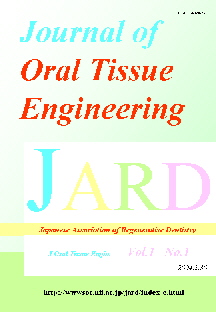Volume 11, Issue 2
Displaying 1-9 of 9 articles from this issue
- |<
- <
- 1
- >
- >|
ORIGINAL ARTICLES
-
Article type: ORIGINAL ARTICLE
2013 Volume 11 Issue 2 Pages 103-112
Published: 2013
Released on J-STAGE: July 24, 2014
Download PDF (724K) -
Article type: ORIGINAL ARTICLE
2013 Volume 11 Issue 2 Pages 113-122
Published: 2013
Released on J-STAGE: July 24, 2014
Download PDF (1023K) -
Article type: ORIGINAL ARTICLE
2013 Volume 11 Issue 2 Pages 123-134
Published: 2013
Released on J-STAGE: July 24, 2014
Download PDF (556K) -
Article type: ORIGINAL ARTICLE
2013 Volume 11 Issue 2 Pages 135-140
Published: 2013
Released on J-STAGE: July 24, 2014
Download PDF (596K) -
Article type: ORIGINAL ARTICLE
2013 Volume 11 Issue 2 Pages 141-147
Published: 2013
Released on J-STAGE: July 24, 2014
Download PDF (206K) -
Article type: ORIGINAL ARTICLE
2013 Volume 11 Issue 2 Pages 148-153
Published: 2013
Released on J-STAGE: July 24, 2014
Download PDF (290K) -
Article type: ORIGINAL ARTICLE
2013 Volume 11 Issue 2 Pages 154-162
Published: 2013
Released on J-STAGE: July 24, 2014
Download PDF (847K) -
Article type: ORIGINAL ARTICLE
2013 Volume 11 Issue 2 Pages 163-171
Published: 2013
Released on J-STAGE: July 24, 2014
Download PDF (266K) -
Article type: ORIGINAL ARTICLE
2013 Volume 11 Issue 2 Pages 172-179
Published: 2013
Released on J-STAGE: July 24, 2014
Download PDF (443K)
- |<
- <
- 1
- >
- >|
